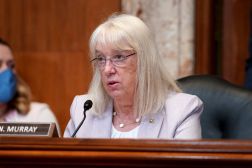Commentary: 4 actions California must take before launching a digital services team

Editor’s Note: This post originally appeared on GovFresh.
A California bipartisan oversight committee, the Little Hoover Commission, has issued recommendations on how the state can bring a more customer-centric government to residents and visitors.
The report, “A Customer-Centric Upgrade For California Government,” calls for the governor and Legislature to designate a chief customer officer, a job that would fall to the secretary of the Government Operations Agency, and an internal digital services team “to help departments deliver services that work for Californians” that would reside within GovOps. Taking a cue from the federal digital services shops like 18F, this team would recruit members of the private sector to work on short-term projects.
The report recommends this team work to create a single sign-on to a personalized resident account and work on a system to customize text and email communications — all while focusing on open data and human-centered design. But, while the report provides high-level recommendations, here are a few tactical areas that must be addressed for any of this to be effectively implemented:
Using open source software has been critical to the success of in-house government innovation shops, especially the Consumer Financial Protection Bureau, 18F and the U.S. Digital Service. While there have been rumblings of support, California’s technical operations is severely lacking in its willingness to truly embrace open source. Failing to do this will deeply impact the next two recommendations.
There has been an effort to open up the procurement process beyond legacy vendors at the federal level, but California fails to a large degree to do this. While an in-house digital team is critical, the only way impact will scale is to bring in vendors that are less focused on legacy business models and more about agile, open innovation. Every state IT discussion or event I’ve been privy to favors entrenched, large-scale sales operations. While the U.K. was able to bring most, if not all of its digital operations in-house, the scale at which California needs support is much larger, and it’ll be a long time before the state can lure top-tier talent from Silicon Valley and other tech-centered areas to work for government, so it must rely on like-minded vendors.
If the state is serious about hiring the “best engineers, technologists and designers,” it must open distributed offices in other California cities, particularly San Francisco, Oakland, Los Angeles and San Diego. While 18F and USDS have lured some to Washington, D.C., Sacramento is not the nation’s capital and working for GovOps, or even the governor directly, there is a far cry from the prestige of walking the halls of the Executive Office Building or White House.
I’m not sure what the status of CalCloud is, but at one point there appeared to be an unwillingness to use nongovernment managed cloud-based services. While security considerations must be taken into account, there needs to be more flexibility around allowing the use of third-party cloud offerings, especially those that don’t involve personal information.
The Little Hoover Commission report is an important resource for governments everywhere in understanding a new approach to addressing digital public services, and it’s great to see a state-sanctioned effort advocating this.
Let’s hope the governor and Legislature move quickly to enact their recommendations and the ones above.
Luke Fretwell is the founder of the civic innovation and technology blog GovFresh, and he advises civic leaders and businesses on how to best leverage digital strategies to create more effective, collaborative governments. Connect with him on Twitter and LinkedIn.






